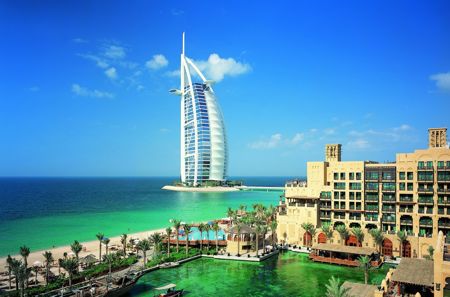
Dubai (دبي) Travel Guide, is one of the seven emirates that make up the United Arab Emirates. It is rather like an independent city-state and is the most modern and progressive emirate in the UAE, developing at an unbelievable pace in the tourist and trade sectors especially. Recently Dubai won the bid to host EXPO 2020, a Universal scale Registered Exposition approved by the Bureau of International Expositions (BIE), Paris.
A relatively new tourist destination, Dubai was gaining popularity in recent years until the global economic crash of 2008. Dubai is essentially a desert city with superb infrastructure, liberal policies (by regional standards), that became popular for its excellent tourist amenities. Just 5 h from Europe and 3 h from most parts of the Middle East, the Near East, and the subcontinent of India, Dubai makes a great short break for shopping, partying, sunbathing, fine dining, sporting events, and even a few sinful pleasures. It is a city of superlatives: for the fastest, biggest, tallest, largest and highest, Dubai is the destination. It has the largest immigrant population in the world. The weekly day off is on Friday. Note that, since September 2006, a harmonised weekend of Friday and Saturday has been adopted for the public sector and schools. Government departments, multinational companies, and most schools and universities are now off on Friday and Saturday (after years of a mixed bag of Friday/Saturday and Thursday/Friday weekends). Some local companies still work half a day on Thursday with a full day on Saturday, but larger companies tend to permit relaxation and time off work for their employees on Friday and Saturday.
Jumeirah — A diverse district whose residents are the Europeans to the Filipinos to the Pakistanis; a mixed Little Europe, Karachi and Manila. Jumeirah is much favoured by Europeans due to the ease of access of the beach, Beautiful villas are seen here. Jumeirah Beach, Jumeirah Beach Residence’s the Walk and Jumeirah Mosque are the top attractions.
Downtown Dubai — While Bur Dubai and Deira are traditionally considered “Downtown”, the Downtown Dubai development is smack in the center of the “New Dubai,” between Dubai Marina on the south end and the border with the city of Sharjah to the north. It includes the Burj Khalifa (tallest building in the world), the Dubai Mall (world’s biggest), Dubai Fountain, and lots of other skyscrapers and hotels.
Dubai Marina — is a mega-development that borders Jebel Ali (the world’s largest man-made port). It is full of skyscrapers and hosts the “Jumeirah Beach Walk” with a number of restaurants, hotels an open-air market when the weather permits, and frequent shows. Dubai Marina houses one of the highest concentrations of Westerns in Dubai.
Satwa — One of Dubai’s Little India and Little Manila, due to the presence of Filipinos and Indians, a rise in Filipino and Indian restaurants, shops, supermarkets are seen here. Gold and textiles is what people come here for, Gold Souk might be your top destination but Satwa too has gold shops and is hassle free, not so crowded.
Karama — More of like a mixed commercial residential district, one of Dubai’s Little Indias and Little Manilas, cheap eats and cheap buys are the top things here.
Bur Dubai — A historical district and Bur Dubai is usual term for the area from Jumeirah to the creek, the creek separates Bur Dubai from Deira. Tourist attractions from abras to souks to floating restaurants to the famous creek are found here.
Deira — Dubai’s old Financial centre, today Deira is a bustling commercial-residential district with some old souks, including one specializing in spices.
Arabian Ranches and Emirates Hills — These are two separate places, residential rents here are expensive due to the land value, just like the whole of Dubai, these two are Man-made.
Mirdiff/Mirdif — A commercial-residential district which is somewhat newly built and lies directly under the flight path to Dubai International Airport. Mirdif City Center is one of the attractions. This is another residence for the well-to-do.
International City — Just a simple residential area in the middle of the desert, what’s special about it is its architectural design, the residential rents here are cheap and is somewhat the next Chinatown as many Chinese businessmen and women reside here.
Jebel Ali — Once isolated from the main bulk of Dubai back in the 70’s, Jebel Ali is now a major residential and industrial hub encompassing the southern portions of the city. The main attraction popular with locals and tourists alike is the easily recognizable Ibn Battuta Mall, styled on the countries visited by the famous explorer. The mall is built adjacent to the Ibn Battuta Gate Hotel that’s large archway can be seen from afar. Surrounding the mall is the Gardens apartments, an ethnically diverse district with a strong Indian community. Jebel Ali village, a 35 year old community built on the side of Jebel Ali (Ali Mountain) for the European builders of Jebel Ali Port is still popular with western expats. The coastal side of the Sheihk Zayed Road in Jebel Ali consists of many unattractive power and desalination plants that somewhat ruin the view. The port was the 9th busiest in the world in 2011.
Climate, Dubai has an arid sub-tropical climate with very hot, humid summer weather averaging 42 degrees (108F) in the daytime and 28 (84F) at night. Falls and Springs are still rather hot, with daytime temperatures between 25 and 40 degrees (80sF) and nights around 20 degrees (65-75F), with less humidity. Winter weather is pleasant and dry, with daytime highs of 25 (75F) and nighttime lows of 10 degrees (55F). Dubai is known for its beaches, with water temperature in summer getting as hot as 37 degrees (99F). The water temperature tends to be around 20-25 degrees (75F) in winter, and 30 (85F) in spring and fall as outside temperatures rise.
December to April generally produces the highest precipitation, which at 10 cm (5 in), still is little. Some years yield no more than a few minutes of shower in Dubai. November 2006 brought record rains up to 50 cm (25 in) of rain, with temperatures at record lows.
Dubai International Airport
Dubai Airport Terminal 1 Interiors
Shops at Dubai Airport
Dubai International Airport (IATA: DXB) is the largest hub in the Middle East and the home base of Dubai’s flag carrier Emirates and its low-cost wing FlyDubai. In fact, it has grown at such a furious pace that the present terminals are bursting at the seams, especially during the peak hours around midnight.
The Dubai International Airport has three terminals and another one in the making as of end 2010.
Terminal 1 is the main terminal, used by most major airlines and long-haul flights.
Terminal 2 serves regional and low-cost flights, including all FlyDubai flights.
Terminal 3 is used exclusively by Emirates.
Terminals 1 and 3 are directly connected to each other via the airside (no immigration needed for transfer), while Terminal 2 is located at the other end of the airport. Terminals 1 and 3 are models of modern airport design, but Terminal 2, despite the recent renovations, is still reminiscent of developing world airports, with long check-in lines, queue-jumping and every other passenger checking in 70 kg of luggage. Shuttle buses between the three run every 20-30 min. However shuttles to Terminal 2 are sporadic at best, so a 30 min taxi ride may be your only option. A low-cost option for traveling to Terminal 2 is to catch the metro to a nearby station, such as GGICO metro station, and from there catch a taxi to Terminal 2.
The airport is famous for its duty-free shopping. However, prices in the airport’s duty-free stores are equal or higher than what you can find in the many malls of the city. Alcohol here is very cheap, though. Alcohol is also available at an inbound duty free store situated in the baggage reclaim area. The amount of alcoholic beverages and beers should not exceed 4 liters of alcohol beverages, or 2 cartons of beer (each consisting of 24 cans, not exceeding 355 ml for each can or its equivalent).
Taxi: Most visitors will opt for public taxis from the airport, which are readily available just outside arrivals, which use the meter and start at Dhs 25. Taxis are on the left when you come out of terminal 1.
Public transport: Terminals 1 and 3 are served by the Dubai Metro. There are also buses just steps from the baggage claim, the most useful for visitors being lines 401 and 402 (Dhs 3), which go to the Al Sabkha and Al Ghubaiba bus terminals respectively.
Al Maktoum International Airport, better known internationally as Dubai World Central (IATA: DWC) opened for passenger transportation in October 2013. Dubai plans to develop the airport into the world’s largest passenger and cargo hub. Right now though only a handful of flights land and depart there every day (for example low cost flights with Wizzair).
Public Transport is limited right now to bus F55 and bus F55a (night bus) that connect to Ibn Battuta metro station. F55 runs between 06:00 and 22:00 on every full hour. The journey takes 43 minutes. F55a runs all the way to the Satwa Bus Station via Ibn Battuta that is located near Bur Dubai. F55a runs between 23:00 and 06:00 hourly on the hour. The journey from DWC to Satwa takes around 90 minutes.
Sharjah International Airport (IATA: SHJ) is located in the emirate of Sharjah. It is only 30 min by road from Dubai and takes an increasing number of international flights as Dubai airport struggles to keep up with demand. Be aware that during morning rush hour from Sharjah and afternoon rush hour into Sharjah, travel times to cross the border between the two emirates normally run more than one hour and can run over two hours. Traffic can be bad between Sharjah and Dubai 24 hours per day, so plan accordingly. The principal carrier here is Air Arabia, a low-cost carrier serving the Middle East and South Asia. The airport is fairly basic but is being expanded. A taxi ride to Dubai will typically cost Dhs 50. A Bus service by Air Arabia also runs from the Airport to the Rashidiya Metro Station in Dubai. Rashidiya metro station is located close to the Dubai International Airport.
By car, Dubai’s only international road border is with Oman at Al Wajajah. Expatriate residents of Oman will require an official permit to exit Oman by road. Visitors do not require the permit. There is an OMR 3.000 charge per vehicle to exit Oman and, if returning, retain the charge receipt as it will be required to renter. Ensure that insurance is valid for the UAE (preferably before commencing the journey). Temporary UAE insurance can be purchased at the border for a premium price.
There are also road borders between the neighbouring Emirate of Abu Dhabi and Oman at the Al Buraimi Oasis which divides the sister cites of Al Ain and Al Buraimi, Oman.
By bus, The Government of Dubai operates a network of buses linking Dubai city with the capitals of the other six emirates of the UAE. The buses run under the name Emirates Express and operate from various bus terminals in Dubai.
To/From Abu Dhabi: Buses operate every 40 minutes from 6.20am from both Dubai’s Al Ghubaibah bus station and Abu Dhabi’s main bus station. The two-hour journey cost Dh25.
To/from Sharjah: Frequent buses run between Dubai and Sharjah. There are several different routes and buses depart from various bus stations in Dubai including Al Karama, Gold Souq, Baniyas Square, Jebel Ali and Al Ittihad Square. Fares are at Dh7 as of DECEMBER 2010.
To/From Al Ain: Buses operate every hour from both Dubai’s Al Ghubaibah bus station. The two-hour journey cost Dh15.
To/from Fujairah: The bus to Fujairah leaves from the Rashidiya Metro station and takes about 3 to 4 hours. To/from Muscat, Oman: al-Khanjry Transport runs a bus from the Ruwi Terminal in Muscat to al-Rigga in Dubai, leaving every day at 6:00am and 3:00pm and also 10:00pm from Deira (ticket office next to Caravan Restaurant 700m from Deira City Centre Metro Station). The journey takes about 6 hours, depending on how much time is spent at customs. From Dubai the buses leave at 7:00am and 3:00pm. 60Dhs (one way)/100Dhs (return). Show up at least 30 minutes before departure. (Prices and schedule accurate as of December 2013.)
By boat, Dubai is a trading hub for dhows from around the Indian Ocean. Travellers wanting to arrive in the city this way will probably need to make their own arrangements with the captain of the vessel.
Dubai has an international cruise terminal at Port Rashid. During wintertime Costa Cruises has based one of its cruise ships (Costa Luminosa) at Dubai.
Al Ahmadiya School, Deira. Built in 1912, this was Dubai’s first school and has now been nicely restored. It would be a stretch to call the exhibits of old reed pens and diplomas fascinating, but they’ve tried pretty hard, and if nothing else, the air-con and clean toilets may come in handy. Free entry.
Bastakiya District. One of the last remaining pockets of Old Dubai, home to many reconstructed buildings in the traditional style. While information on the structures is slim here (see the museum in preference), the atmosphere is very evocative and there are plenty of delightful art galleries and cafes to explore.
Dubai Museum, Al Ibn Abi Talib Road, ph: +971 (4) 353-1862. A must-see for anyone interested in the social history of the Emirate (and indeed the country). A visit starts at the al-Fahidi fort, which has a few examples of the traditional reed houses and other artifacts, but isn’t much to look at. The more interesting part is the modern extension built underneath the fort, showcasing Dubai’s history using the latest technology and culminating in a reconstructed souq from the pearling days, complete with authentic sights and sounds. It is quite fascinating to see the speed at which the transition from poor pearling village to modern metropolis occurred. Admission 3AED.
Jumeirah Mosque, Jumeirah Road, Jumeirah 1 (opposite Palm Strip Mall). Is the largest in the city, and a wonderful example of Islamic architecture. Built in the medieval Fatimid tradition with the interior decorated with elaborate Arabic calligraphy. It is one of few mosques in the city open for visits by non-Muslims, the Sheikh Mohammed Centre for Cultural Understanding conducts special tours for non-Muslims to help promote understanding of Islam. Guided tours are available on Tuesday, Thursday, and Sunday beginning at 10AM, followed by a question-and-answer session. Located on Jumeirah Road, the mosque is an especially great place to visit in the evening when it’s dramatically illuminated by floodlights.
Shindagha District — Home to the open museums of the Heritage Village, and has the home of former Sheikh Rashid Al-Maktoum.
Souks — There are a number of nice souks, or markets, on both sides of the creek that are worth exploring. They sell everything from spices to crafts to very inexpensive tourist t-shirts.
Burj Khalifa, Until recently called Burj Dubai, at 828 metres and 160 floors this is the world’s tallest structure by a long shot, over 300m taller than the previous contender in Taipei. The observation deck at the 124th floor is the 2nd highest in the world after the Shanghai World Financial center. Already dominating the Dubai skyline, the newly opened tower houses nine hotels and a Las Vegas-inspired fountain system. The visitors’ entrance is located at the lower ground floor of Dubai Mall. Although the tour is called At the Top be aware that it isn’t! Although the observation deck is the highest open deck in the world, at 452m it’s just over halfway up the tower itself. Console yourself with the knowledge that most of the rest of the tower consists of service areas and the view below looks suitably ant-like. Tickets cost Dhs 125 for a timed entry ticket, usually later the same day, or Dhs 400 if you do not want to wait. Tickets can sell out several days in advance, and it is advisable to book them online ahead of your visit.
The Dubai Fountain, At 270m (900ft) in length and sporting a jet that shoots water up to 150m (500 ft), the Dubai Fountain is indeed the world’s largest dancing fountain and one with a very enticing display – a definite must see. The show starts every evening at the Burj Dubai Lake. Easy way to approach it is via the Dubai Mall.
Shows are every 30 minutes from 6pm to 10pm on weekdays and from 6pm to 11pm on weekends. It’s the world’s largest dancing fountain with classical, Arabic and world music. About 1.5 million lumens of projected light and the spray heights of up to 150m/500 ft (22,000 gallons of airborne water).
Burj al-Arab hotel. For a real glimpse into “how the other half lives”, (self-proclaimed as the only 7 star hotel in the world), afternoon tea, or cocktails, may be an interesting experience. Entry to the hotel requires a reservation which will be confirmed at the entry gate, although residents of adjacent Jumeirah hotels may be able to visit by arrangement. Other tourists may occasionally be able to book tours of the hotel itself, however these will not run when the hotel is full. A “very smart casual” dress code applies. Reservations are usually required about a month in advance for a room, but a few days will generally suffice for a meal.
Dubai Marina. One of the newer and more popular areas of Modern Dubai, both with residents and tourists. It offers numerous features such as a phenomenal skyline, world class hotels, a fabulous beach, a mall, and 2 different walkways (The Walk and Marina Walk) with coffee shops, restaurants, and shops. Marina Walk is right on the “Marina water”, and there are many yachts there. You can rent a yacht for a cruise around the area. The Walk has a nice open market run from October till May, every Fridays and Saturdays at daylight.
Palm Islands. The three largest artificial islands in the world are located just off the coast of Dubai; a major urban development to add a significant amount of upscale beachfront property to the area. Each of the islands is shaped like a palm leaf, with a trunk connected to the mainland, fronds extending from the trunk, and a crescent (a breakwater encircling the trunk and fronds). Of the three planned, the Palm Jumeirah, at 5km square and near Dubai Marina, is the only one yet open, connected to the mainland by a freeway bridge and a monorail and sporting marinas, luxury resorts, and upscale shopping areas.
Beaches and sea. There are endless water-sport opportunities as Dubai has some of the whitest and sandiest beaches in the world. Ocean temperatures range from 22°C in winter up to 35°C in summer, there are few wave breaks and the strong winds can make swimming difficult. The water is also very salty so many prefer to use their hotel swimming pool. Diving activities have been severely affected by offshore construction work for the Palms and The World; consequently, long boat trips are necessary to reach wreck sites. Alternatively, one can make the 90 minute road journey to the East coast Emirate of Fujairah or the Sharjah enclave, Khor Fakkan, for top class diving on coral reefs supporting extensive marine life.
Natural Outdoors. Although at first glance the outdoors may seem dull and uninteresting, and even dangerous due to the desert conditions, there are actually amazing natural destinations in the emirate of Dubai, which extends into Hatta – the difficulty is in knowing where to find them! There are pristine waterfalls, cliffs lined with fossils, even freshwater lakes – Weekenduae is a blog that freely shares ideas, routes and plans for weekend adventures with all trip details including description, GPS track, interactive map, and photos.
Parks. Al Safa Park is one of the oldest in Dubai. It’s a favorite for sports enthusiasts, and many visitors enjoy playing tennis, volleyball, and soccer. Children love playing games in the video arcade, or riding the ferris wheel and bumper cars. The park even has a maze to wander through. Barbeques and picnic areas are available for those who want to make a day of it.
Camel Races. The Camel Race Track is one of the more unusual attractions, with races being held on Thursday and Friday in the winter. Not only can you watch the races, but you’ll have the opportunity to visit the paddocks. Vendors sell everything from beads to rugs and blankets, so you can purchase souvenirs. Madinat Jumeirah is also known as Jumeirah City, and is a complex of residential neighborhoods, two luxury hotels, and a shopping mall.
Water Sports. Thrill seeking water excitement. Banana boat ride and parasailing and many other water sports activities.
Desert Safari or Dune Bashing. Dubai is well known of its Desert Safaris and extreme adventure sports in the desert. The most popular extreme adventure tour is called the dune bashing. Dune Bashing uses different things like 4X4 Safari Jeeps, Sand Boards, Quad Bikes and Dune Buggies.There are several giant tours operators promoting Dubai Deserts such as North Tours, Dubai Dune Buggy, Desert safari Dubai etc. Head out to the desert in an SUV with specialist Desert Drivers. The drivers will take you for a roller-coaster ride over sand dunes, show you the sunset from a strategic vantage point and then take you to a lavish dinner with music and dance to complete the atmosphere. You may want to stay clear of the dune-bashing if you know that you get carsick easily. They have recently added a Hummer H3 to the roster, which costs a bit more but is worth the money like featured by MTDubai. Another option would be renting/buying a 4×4 and joining the many growing 4×4 clubs in the UAE, which are varied and each carry their own different flavour: ad4x4, uaeoffroaders, arabianoffroader, me4x4, emarat4x4, etc. They offer a free learning experience for all newcomers with scheduled weekly trips to suit all levels of driving skills, some of them have over 2,000 members from many nationalities.
Fishing. Enjoy deep sea fishing in the middle of the Dubai Sea.
Ski. Dubai now has its own snow skiing centre. Located in the new Mall of the Emirates (MOE), on the Sheikh Zayed Road, it offers both skiing and snowboarding. The slope is quite large for an indoor area. All equipment is available for hire. Although it is -4°C inside, you don’t need to bring a jacket because they supply pretty much everything except gloves and a hat (which you can buy right there). A 2 hour pass costs Dhs180 plus Dhs20 for a locker.
Wild Wadi. Wild Wadi Park is the perfect place for the entire family to spend a day as well as being a great way to beat the heat and enjoy the day away from the bustle of the city. Located close to the hotels and resorts of Jumeriah Beach, the park has water rides, slides, and a lagoon that’s hidden away. You’ll enjoy waterfalls, out of the way swimming holes, and a tidal pool.
Yacht Charter. A new way to explore coastal Dubai. See man-made Palm Islands and skyscrapers while being yachting and partying on Dubai waters.
Dubai Creek Cruise/Ride. The Dubai creek is the foundation from which Dubai grew. It originally served as a port for trading vessels plying to and from India, Africa and the Middle East. Today a bit of the old shipping culture still remains. In and around the creek one can see some of the original buildings that have served as customs houses and defense structures. You can book a ride on the creek with a dinner cruise or even rent a private boat to take you on a hour long ride up and down the creek.
Dubai Dolphinarium, (Near to Creek), Golf. It may be a desert, but a lot of money and water is spent on irrigating opulent golf courses. Alternatively, for a more local flavor, try sand golf!
Hot Air Balloon. Great Fun seeing all the sand Dunes and mountains early in the morning or during sunset.
Dubai Zoo, Jumeirah Road. An outdoor zoo near to the beach. Considering the extreme temperatures during the summer months, there are plans to bring the zoo indoors. The zoo is not worth visiting as the number and variety of animals are few, and housing conditions are also appalling. Animals are trapped in cages too small for them to take more than a few steps, and are frustrated and bored. Admission 3AED.
Global Village. Happens Annually and is operated by Dubai Land, this usually happens during winter; from Late November to late February. Countries around the world gather and set up a small village in the outskirts of Dubai, each country/region has its own pavilion with a unique replica of their famous landmark(s). This is usually like a flea market where you can get souvenirs from almost every corner of the earth for a bargained price and experience as if you’re in that certain country for at least 10 minutes of your life even if you’re 10,000km away. Raffles for cars and gold bars also happen. You’d see the hieroglyphics of Egypt, temples of Thailand, Forbidden city of Beijing, the Eiffel tower and many more.

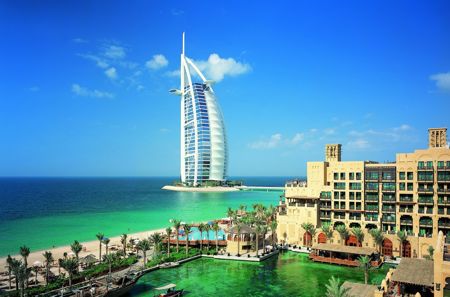
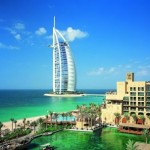
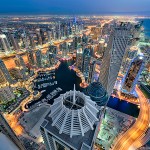
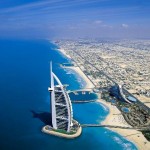
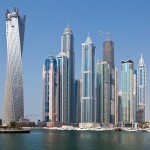
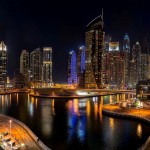
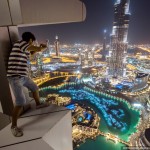
0 Comments